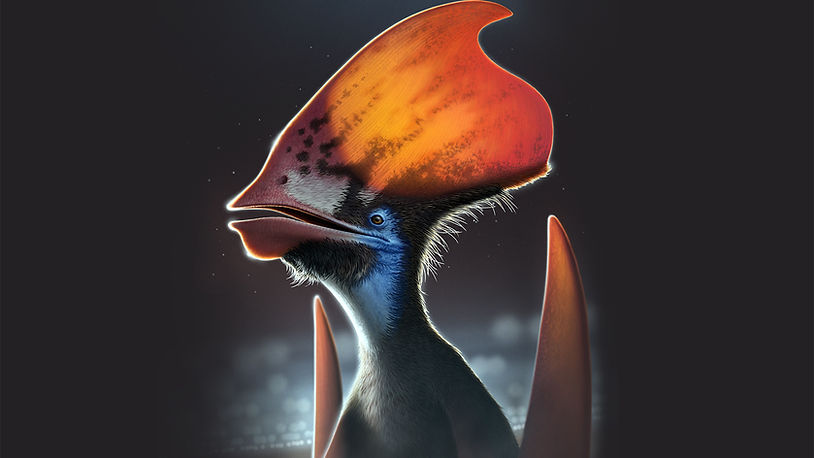By: Leo Chen
113 million years ago in Brazil, in the early Cretaceous, ferns and other early plants swayed in the soft, humid breeze. Small mammals scurried through logs, ferns while avoiding swamp monsters and the tremendous feet of herbivores like Triceratops, Ankylosaurus, Hadrosaurus, and occasionally, carnivores like Spinosaurus or well-known Tyrannosaurus rex. Among all these land-dwellers, creatures also roamed through the skies. Those flying reptiles like Tupandactylus imperator had no feathers topping the huge heads before, but due to the recent scientific discoveries, they now have feathery skulls.
Recently, an analyzed 113-million-year-old fossil suggests that feathers may have topped the pterosaur’s head; it showed that the pterosaur had 2 different feathers on its head, like modern birds. The skeleton’s non-bones were also kept well, which allowed scientists to confirm a diversity of different shaped cells containing colored pigments. The color pigments encourage that the reptile used its feathers to send signals, like finding a mate.
Pterosaurs are a group of different prehistoric flying reptiles. They were not true dinosaurs but lived with them. It’s believed greatly that they were Earth’s first vertebrate flyers. But scientists have argued whether pterosaurs had true feathers. Either way, they didn’t use feathers to fly. Instead, they used a sheet of thin skin that stretched between their wings (like modern bats).
In 2018, McNamara and her team found that some of the fluff covering two pterosaurs’ fossils showed complex patterns that looked like modern feathers. But other paleontologists debated that the patterns were overlapping pycnofibers (a hair-like material). McNamara found that in the fossil, the branches in the patterns are the same length. They also stretch all down the feather’s central line, proving that. “It’s very clear. We see feathers that are separated, isolated — you can’t say it’s an overlap of structures.”











